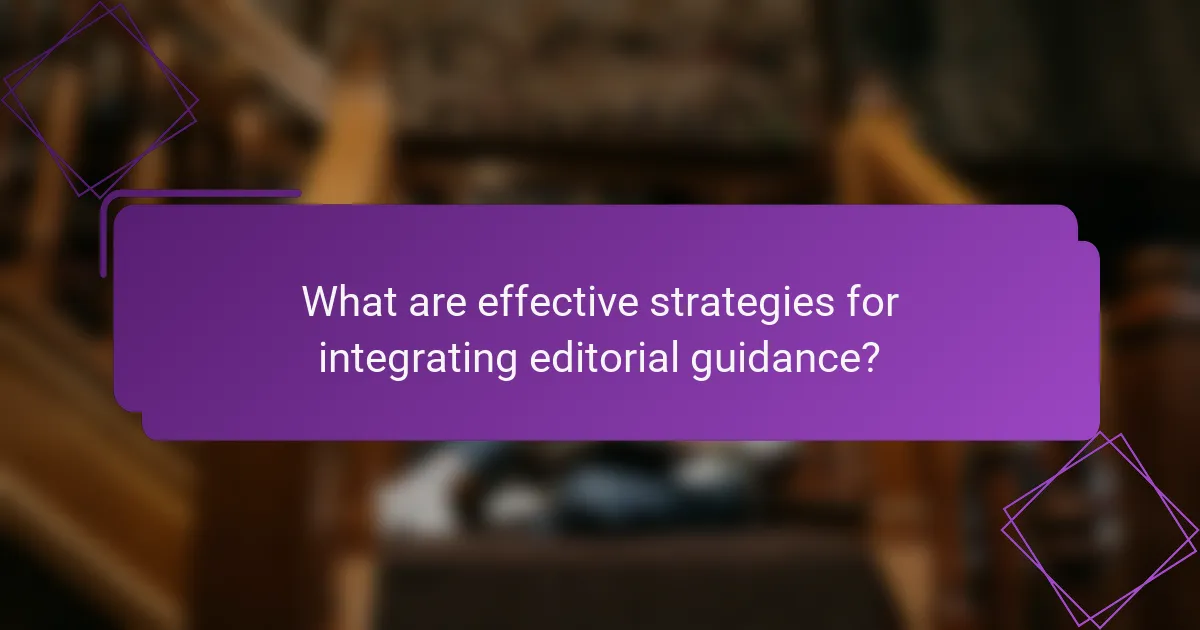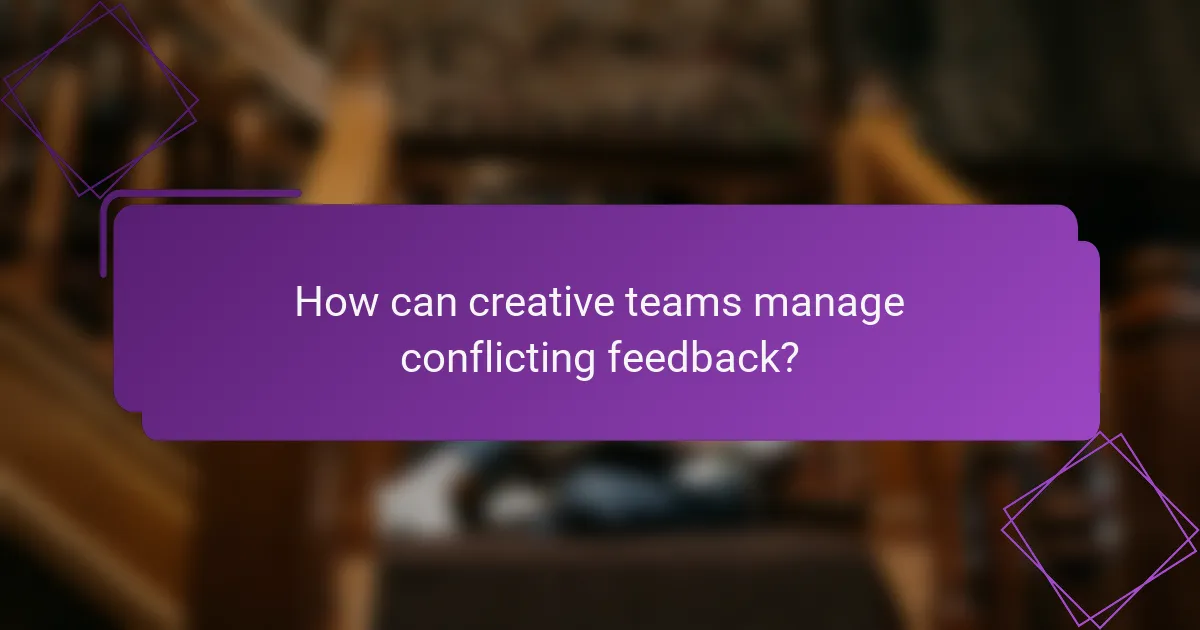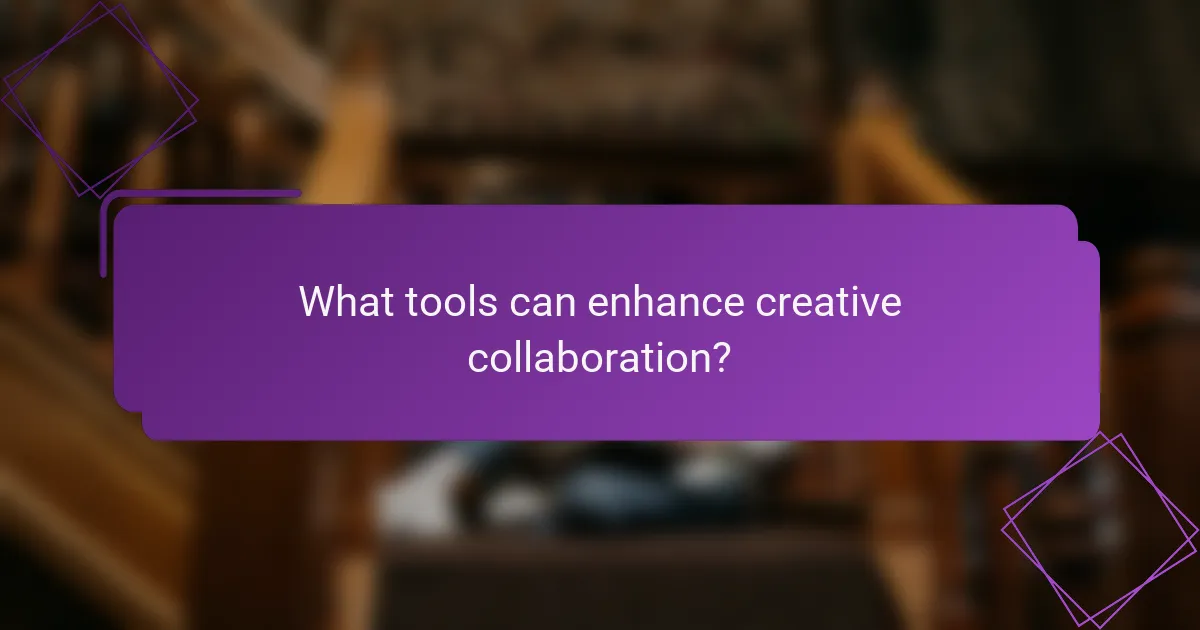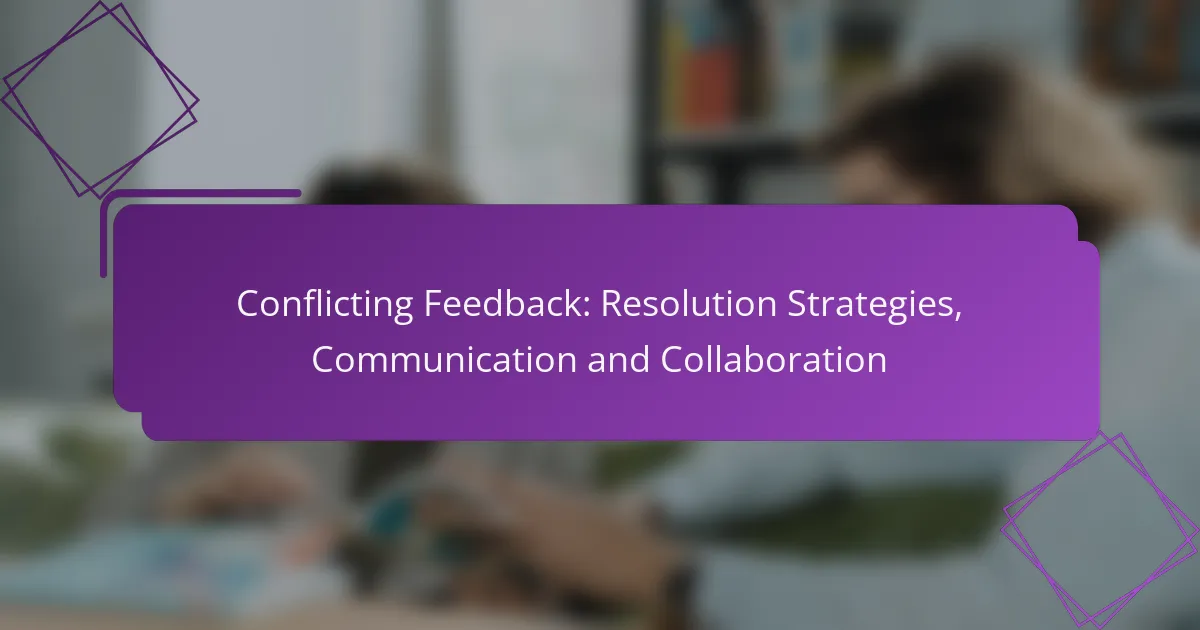Balancing creative vision with feedback is essential in editorial projects, as it allows for the integration of valuable insights while preserving the project’s core intent. By establishing clear guidelines and fostering collaboration, teams can ensure that feedback enhances the quality of the creative output without compromising the original vision.

How to balance creative vision with feedback in editorial projects?
Balancing creative vision with feedback in editorial projects involves integrating insights from stakeholders while maintaining the project’s core intent. This requires a structured approach to ensure that the final output reflects both the original vision and valuable external perspectives.
Utilize structured feedback sessions
Structured feedback sessions are essential for gathering targeted insights without overwhelming the creative process. Schedule these sessions at key project milestones to ensure that feedback is timely and relevant. Aim for a mix of qualitative and quantitative feedback to cover various aspects of the project.
During these sessions, encourage participants to focus on specific elements such as tone, clarity, and alignment with the overall vision. Use tools like feedback forms or guided questions to streamline the process and avoid vague comments.
Incorporate vision alignment workshops
Vision alignment workshops help ensure that all team members share a common understanding of the project’s goals. These workshops should be held at the project’s outset and whenever significant changes occur. Use collaborative activities to clarify the vision and gather input from all stakeholders.
Consider using visual aids, such as mood boards or concept maps, to illustrate the creative vision. This can help participants articulate their thoughts and align their feedback with the intended direction of the project.
Implement iterative review processes
Iterative review processes allow for continuous refinement of the project based on ongoing feedback. Establish a cycle of creation, review, and revision to keep the project aligned with both the creative vision and stakeholder expectations. This approach can enhance the quality of the final output significantly.
Set clear deadlines for each iteration and ensure that feedback is actionable and specific. Avoid waiting until the final stages to gather input, as early reviews can prevent major revisions later on, saving time and resources.

What are effective strategies for integrating editorial guidance?
Effective strategies for integrating editorial guidance involve creating clear guidelines and fostering a culture of collaboration. These approaches ensure that feedback is constructive and aligned with the overall vision, enhancing the quality of creative output.
Develop clear editorial guidelines
Clear editorial guidelines serve as a roadmap for content creators, outlining expectations regarding tone, style, and structure. These guidelines should be specific enough to provide direction but flexible enough to allow for creative expression.
Consider including examples of preferred language, formatting standards, and key themes to maintain consistency. Regularly revisiting and updating guidelines can help address evolving audience needs and industry trends.
Establish a collaborative feedback culture
A collaborative feedback culture encourages open communication and constructive criticism among team members. This approach helps individuals feel valued and promotes a sense of ownership over their work, leading to higher quality outcomes.
Implement regular feedback sessions where team members can share insights and suggestions in a supportive environment. Encourage a mindset where feedback is viewed as an opportunity for growth rather than criticism, which can significantly enhance team dynamics and creative output.

How can creative teams manage conflicting feedback?
Creative teams can effectively manage conflicting feedback by establishing clear project goals and fostering open communication among team members. This approach helps prioritize feedback that aligns with the overall vision while addressing differing opinions constructively.
Prioritize feedback based on project goals
To navigate conflicting feedback, start by identifying the primary objectives of the project. This clarity allows teams to evaluate feedback based on its relevance to these goals, ensuring that the most impactful suggestions are prioritized.
For instance, if a project aims to enhance user engagement, feedback that directly contributes to user experience should take precedence over aesthetic concerns. Establishing a ranking system for feedback can help streamline this process, categorizing suggestions as critical, important, or minor.
Facilitate open discussions for conflict resolution
Encouraging open discussions among team members is essential for resolving conflicting feedback. Create a safe environment where everyone feels comfortable sharing their perspectives, which can lead to a more comprehensive understanding of the feedback’s implications.
Regular team meetings or brainstorming sessions can be effective for this purpose. During these discussions, consider using techniques like round-robin sharing or anonymous feedback tools to ensure all voices are heard. This collaborative approach can help reconcile differing viewpoints and foster a unified direction for the project.

What tools can enhance creative collaboration?
Tools that enhance creative collaboration streamline communication and project management, making it easier for teams to share ideas and feedback. Utilizing the right software can significantly improve workflow and ensure that everyone is aligned with the creative vision.
Use project management software like Trello
Project management software such as Trello helps teams organize tasks visually, making it easier to track progress and manage deadlines. By creating boards for different projects, team members can assign tasks, set due dates, and attach relevant files, ensuring clarity in responsibilities.
Consider using Trello’s checklist feature to break down larger tasks into manageable steps. This approach can help prevent overwhelm and maintain focus on specific objectives. Regularly updating the board keeps everyone informed and engaged.
Leverage communication platforms like Slack
Communication platforms like Slack facilitate real-time conversations and feedback among team members, enhancing collaboration. Channels can be created for specific projects or topics, allowing for organized discussions and easy access to information.
Utilize Slack’s integration features to connect with other tools, such as Google Drive or Trello, to streamline workflows. Setting guidelines for communication, like designated response times, can help maintain efficiency and reduce misunderstandings.

How to measure the impact of feedback on creative output?
Measuring the impact of feedback on creative output involves assessing how suggestions and critiques influence the final product. This can be done by analyzing project milestones, outcomes, and conducting evaluations after completion.
Track project milestones and outcomes
Tracking project milestones and outcomes is essential for understanding how feedback shapes creative work. Establish clear benchmarks throughout the project timeline to evaluate progress and the effectiveness of implemented feedback. For instance, if a design project has phases like concept, draft, and final review, assess how feedback at each stage alters the direction and quality of the output.
Utilize tools like Gantt charts or project management software to visualize milestones. This helps in identifying whether feedback leads to improvements or delays, allowing for timely adjustments in strategy.
Conduct post-project evaluations
Conducting post-project evaluations is a critical step in measuring feedback’s impact. Gather insights from team members and stakeholders about what worked well and what didn’t. This can include surveys or structured interviews focusing on how feedback influenced the creative process and final results.
Consider using a simple scoring system to quantify feedback effectiveness, such as rating aspects like clarity, relevance, and implementation success on a scale of 1 to 5. This quantitative data, combined with qualitative insights, provides a comprehensive view of feedback’s role in the creative output.

What are the best practices for maintaining creative vision?
Maintaining creative vision involves a balance between personal expression, project objectives, and constructive feedback. Best practices include regularly revisiting project goals and encouraging individual creativity to ensure alignment and innovation.
Regularly revisit project objectives
Consistently reviewing project objectives helps keep the creative vision aligned with the intended outcomes. This practice ensures that all team members understand the goals and can adjust their contributions accordingly. Schedule regular check-ins to discuss progress and any necessary pivots.
Consider using a project management tool to track objectives and milestones. This can help visualize progress and highlight areas needing attention. A simple checklist can serve as a reminder of key goals, ensuring they remain front of mind throughout the creative process.
Encourage personal creative expression
Fostering an environment that values personal creative expression can enhance overall project quality. Allow team members to explore their unique ideas and styles, which can lead to innovative solutions and a richer final product. Create opportunities for brainstorming sessions where all voices are heard.
To balance personal expression with project goals, set clear boundaries while encouraging creativity. For instance, provide guidelines on themes or styles but allow flexibility within those parameters. This approach can help maintain a cohesive vision while still embracing individual contributions.



